


Citrusy and bittersweet drinks, which go under the umbrella term "amaro" or digestif, go well with creamy desserts like tiramisu and panna cotta, and they can also go over a ball of ice cream like you would in an Affogato. They will also pair well with milk chocolate, almond, and hazelnut, or the following fruits: strawberries, grapes, cherries, and figs.
If this sounds to you like spending time in a chemistry lab, here's a mistake-proof, 5-minute hack that will help you decide which liquors you like: add 1 tsp of your selected liquor to a cup of whipped cream. Season it with a few pinches of sugar and a sprinkle of salt. This goes over a piece of chocolate cake or ice cream.
Another mistake-proof pairing is almond or coffee liquors with any chocolate dessert.
There's room for unique liquors as well: the rule of thumb is to pair similar tastes. If it's a Limoncello, tune into that lemony citrusy hues and pair it in a citrusy dessert of any kind. A cherry liquor will go into cherry pie and so on. If you're using a spicy liquor it can complement the pumpkin spice in your pies. Bottoms up!
H/T: Epicurious
 9:23
9:23
12 Pie Tricks Any Baker Should Try
Whether you’re a beginner or a seasoned baker, these useful tricks and hacks are sure to take your pie to the next level!

5 Best Ways to Prepare Fish While Keeping them Nutritious
In this article, we'll explore the eight most common ways of preparing fish and their effects on this beloved and healthy food.

From Can to Gourmet: Cooking Tips for Canned Vegetables
Here are our tips on how to make a delicious meal from canned vegetables.

14 Exceptionally Beautiful Home Baked Cakes and Cookies
If you love desserts and value creativity, you'll love this collection of magnificently decorated cakes, pies, and cookies!
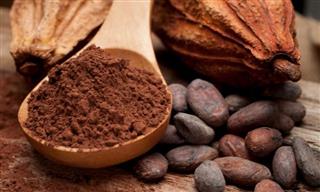
What on Earth is Baking Cocoa?!
Cocoa powder and baking cocoa are two entirely different things. Let's see how.

6 Easy Desserts That Will Make Your Meal Unforgettable
Here you’ll find unique cakes, easy-to-make cookies, indulgent chocolate brownies, and many more

Liven Up Your Summer with These 4 Delicious Salad Recipes
The hot days of the summer are here and with it, the desire to eat light meals - try the following salad recipes to feel refreshed and healthy!
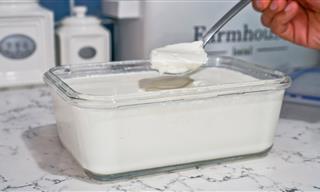 2:55
2:55
Why Spend Money On Yogurt When You Can Make It Yourself?
Why spend money on buying yogurt when you can make it easily at home with just two ingredients?
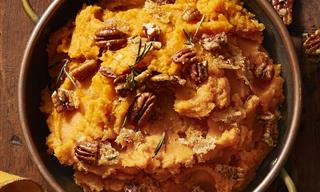
Delicious: Make Rosemary-Pecan Mashed Sweet Potatoes
This recipe delivers all the comfort of classic mashed potatoes with an elegant twist that sweet potato lovers will adore.

This Is How Long You Can Freeze These Foods For!
We all know that freezing food prevents it from rotting. Here's a complete guide to how long you can let different foods stay frozen until they go bad!
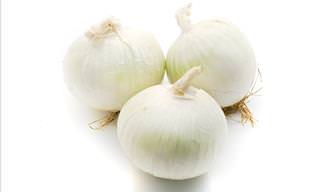
What You Need to Know About Different Types of Onions!
Red, yellow, and white onions are all slightly different when it comes to their flavor and texture. Read on to find out more.
 15:58
15:58
White Bread - 6 Delicious Food Ideas on a Budget
All you have left in the kitchen is some white bread? Learn how to easily prepare 6 budget-friendly foods using white bread as the base...
 5:29
5:29
3 Delicious Recipes of Roasted Potatoes by Jamie Oliver
Here's how Jamie Oliver makes the ultimate roasted potatoes to accompany any main dish - 3 delicious ways!
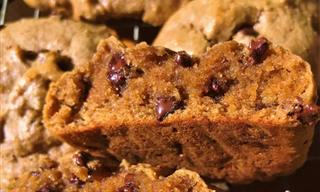
3 Winning Banana-Based Delicacies Everyone Will Love
From creamy puddings to decadent cakes and vegan cookies, these dishes showcase the banana's endless possibilities.
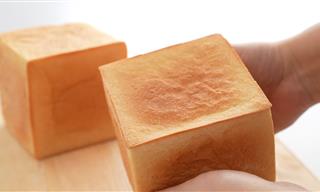 10:12
10:12
This Soft Japanese Milk Bread Just Melts in the Mouth
Ever tried Japanese milk bread? It's just so soft and yummy...
 3:17
3:17
These Refreshing Watermelon Drinks Are Perfect For Summer!
In this video, you will learn the recipes for 3 easy and yummy watermelon drinks, which are sure to become summer staples!

Korean Fried Chicken: This is the Ultimate Fried Food!
If you like fried chicken you will simply love this Korean take on our favorite fried food. What better way to spice up your fried chicken that by learning this!

Nutritious Poke Bowls Will Be Your New Favorite Meals!
Create a delicious poke bowl, using fish, meat and vegetarian with these recipes.
 14:59
14:59
6 Unique Italian-Inspired Dinner Recipes You Must Try
These Italian-inspired dishes have a unique twist that makes them even more amazing!

These Protein Packed Broccoli & Cheddar Bites Are Delicious
A delicious and protein-packed snack that'll make for the perfect side dish.

6 Tasty Cakes You Can Make with Just a Mug and a Microwave
If you are a dessert lover, you need to see these fantastic cake recipes you can make in a mug and cook in the microwave. They're absolutely delicious!
 10:41
10:41
Let Gordon Ramsay Show You How to Buy and Prepare Fish
Kick back and relax, and let Gordon Ramsay explain to you how to choose and buy the best fish!

No Oven? No Worries! Three Easy No-Bake Dessert Recipes
Baking is an exact science where everything could go sideways because of a single inaccuracy. Luckily, these desserts require no baking.

You've Probably Never Had Pasta Quite Like This Before...
A twist on traditional pasta recipes you and your family will love.

3 Orange Recipes You've Never Tasted Before
Here are 3 truly unique recipes with oranges as the main ingredient.
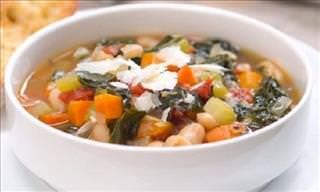
This Tasty Soup Will Become One of Your Favorite Dishes!
This Tuscan white bean & kale soup is healthy as well as hearty. Here's how you can make it.

7 Ways to Instantly Upgrade Your Chicken Breast
Here are 7 simple but powerful techniques you can start using right away to make your chicken breasts taste better.
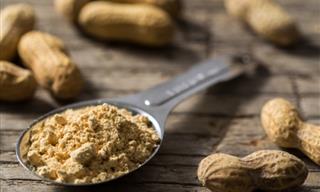
How to Use Powdered Peanut Butter in Your Recipes
Peanut butter powder can be used in many more ways than just making a sandwich. Here are a few recipes you will love.

How to Turn Any Recipe Into a Vegan Recipe
Switching to veganism can be a daunting task, but the process can be made easier if you know a few simple tricks. Here's how to turn every recipe vegan.
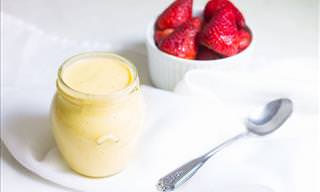
5 Great & Basic Cream Recipes We All Should Know
Learn how to make 5 of the most basic creams every baking enthusiast should know how to make! So, the next time you want to make a luxurious and impressive dessert, simply choose one of these excellent cream recipes.

Create This Chocolate Peanut Butter Dessert Without Baking
Create a mouthwatering chocolate peanut butter desert without any baking. This easy-to-follow recipe will melt in your mouth with its delicious flavors.
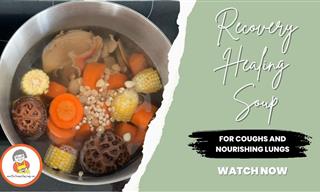 4:04
4:04
A Herbal Soup to Clear Congestion and Support Lung Health
This traditional Chinese soup offers natural comfort and relief.
 3:07
3:07
A Homemade Carrot Jam Recipe That’s Great for Your Health
Want to try a jam that's yummy but also super healthy? Then try out this delicious carrot jam recipe.

Learn to Make Delicious Cherry and Chocolate 2-Tone Fudge
This amazing recipe for cherry and chocolate two tone fudge will make anyone's taste buds dance with joy!
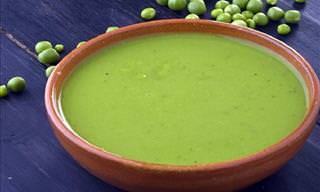
This Pea Soup Recipe is One of the Best Around!
This recipe will show you how to make a delicious pot of pea soup.

We Bet You've Never Tasted Potatoes As Delicious As These
These are the best potatoes you have ever tasted!
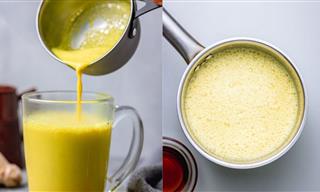 1:32
1:32
Turmeric Milk: Your Nighttime Sleep Elixir
Improve your sleep with this turmeric milk recipe.

These Pies Are Truly a Feast for the Eyes and the Stomach!
If you love pies, then you absolutely need to check out these incredibly beautiful pie crusts, which are utter masterpieces.
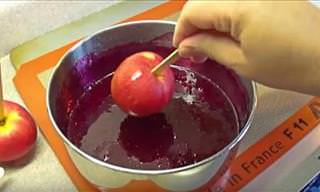
How to Use Apples in the Best Possible Way This Fall
Here are some of the best tried and tested recipes you can make with apples.
 3:03
3:03
Here Are the Very Best Ways to Cook Sweet Potatoes
There are numerous different ways of cooking sweet potatoes, but which is the most nutritious? Find out in this informative video.

Toasting Used to be Done With a Real Toast!
How much do you know about wines? Kick start the weekend with some facts and puns about the drink of history
 10:02
10:02
5 Cool and Unexpected Ways to Use Pizza Dough
Have some leftover pizza dough? Here are some neat ways to use it.
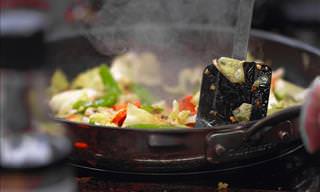
Discover How to Reheat Any Leftovers in the Optimal Way
Learn the ideal way to reheat any kind of meal with this comprehensive guide.
 2:45
2:45
The Yummiest Donuts You’ve Never Had Before!
Ever tried bubble donuts? They are soft, small, delicious, and super easy to make. Follow the recipe here...
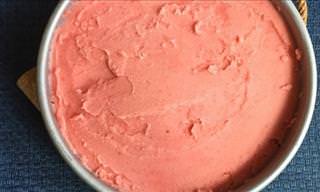
This Tasty Sorbet Only Requires One Ingredient to Make!
This delicious sorbet only requires one ingredient! Learn how to make it yourself here.
 8:57
8:57
Three Delicious and Clever Ways to Use Bacon in Cooking
Don't eggs and bacon hash browns sound like the perfect weekend breakfast? Learn to make this and two other bacon recipes from a renowned chef...

Have You Tried this Delicious Apple Upside Down Cake?
Impress your friends and family with this beautiful and incredibly delicious apple upside-down cake. While this recipe may require some effort, it is certainly worth it.
To enable your Ad-Free Subscription, please fill the fields below
Your subscription was successful, now you can enjoy an ad-free experience!! Note: To make sure you get no ads, please make sure to log in to your account. If you are logged in already, then refresh the page. The subscription can be cancelled at any time.


